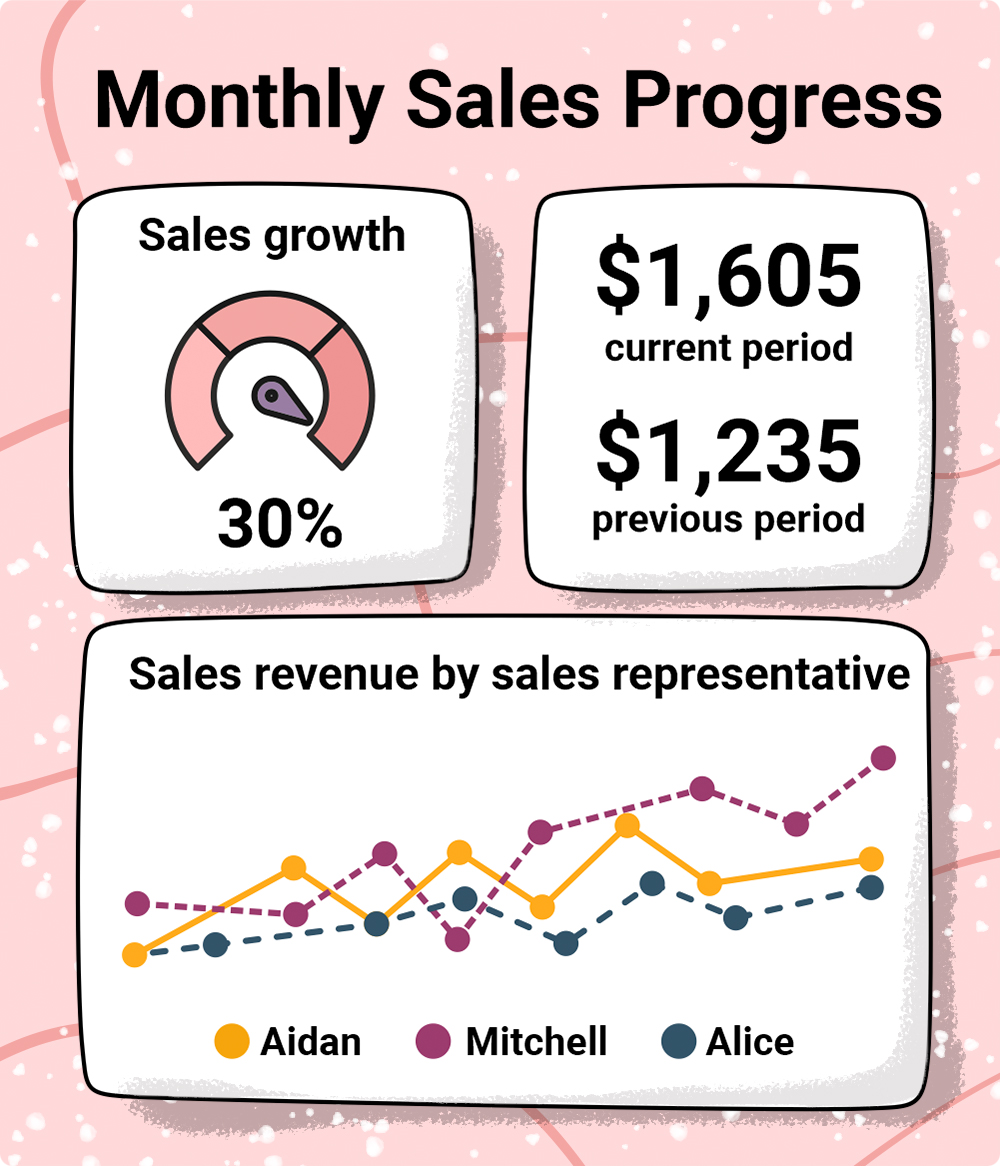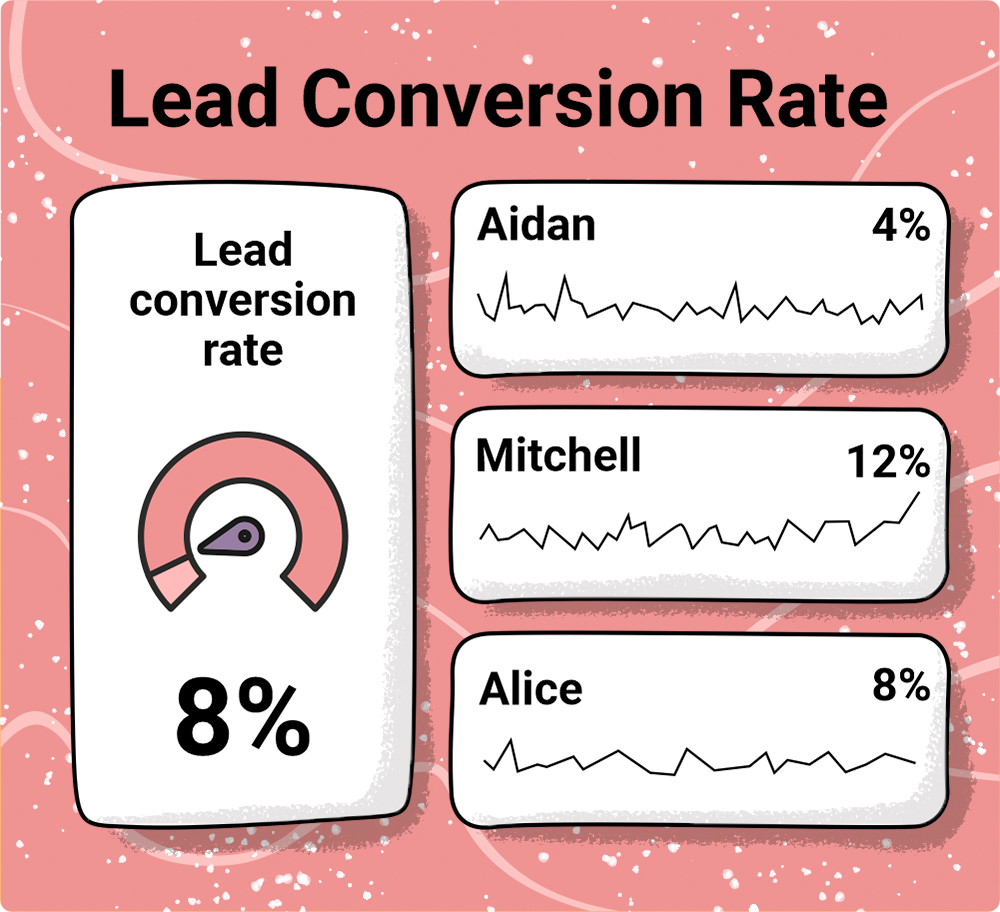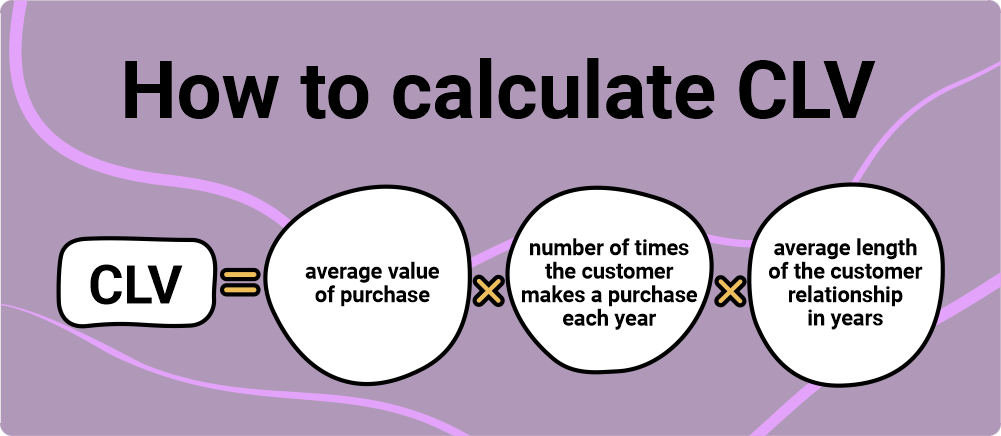Building a winning team, increasing revenue, and staying ahead of the competition requires data. This means grasping essential KPIs and metrics every sales team should be tracking to secure success.
But here’s where many sales professionals make a mistake — they set as many KPIs as possible and get carried away!
When tracking every step your sales team takes, at some point, assessment paralysis sets in, which can easily metamorphose into overkill! Overanalysis can then lead to sales burnout, and you just can’t let that happen.
To avoid it, identify precisely which sales KPIs are most beneficial for your company and your sales reps‘ performance. Then implement them properly by optimizing your sales metrics to the max.
If you have difficulty deciding on the metrics that will help your company grow, we’ve got you covered! In this article, you’ll find pointers on the things to consider when selecting sales KPIs for your business and the top 7 metrics your sales team should be tracking.
Outline:
Basics of sales KPIs
If you’re a solopreneur or are managing a small/medium-sized business or startup, the rules of assessing sales KPIs might be unfamiliar to you. However, you’ll have to get used to them if you want to remain up-to-date on your sales team’s activities.
Applying sales KPIs is a process wherein you track and evaluate your sales team’s performance and any sales activities executed. Your KPIs should guide your decision-making efforts and assist you in boosting sales growth and achieving the set results faster.
Key performance indicator benefits
By utilizing sales metrics, your company goals, objectives, and priorities become more streamlined, clear-cut, and attainable. In other words, the more you simplify your KPIs and metrics, the better your business will perform. So, get rid of the clutter and focus on what’s essential!
If you’re taking the right steps, your KPIs will provide you with immeasurable insights into your team’s activities. What’s more, you will be able to identify advancement opportunities based on the sales reps’ performance.
Besides, having clear metrics set, you can maximize revenue, identify issues that need to be fixed, choose better sales techniques, and improve your day-to-day sales strategy, which will help you hit your sales targets.
Rather than relying on insurmountable reports, calculations, and databases, focus on a compact set of measurements to analyze on a routine basis. As you master the process, you can determine which KPIs to focus on at any given time.
Key performance indicator drawbacks
Sure, sales KPI tracking is critical for growing your sales team, increasing revenue, and staying ahead of the competition. Nonetheless, utilizing KPIs does have its drawbacks. Here are a few:
- KPIs require consistent monitoring and analysis.
- Your sales team might begin to feel harried and stressed trying to meet KPI requirements.
- Patience is required as KPIs take time before useful data is unveiled.
- Company performance may suffer if you’re too focused on output and capacity KPIs.
The list is short, but the consequences are long-term if you are not careful how you present and handle your sales team KPIs.
Tip from us: Your sales team metrics are not required to revolve solely around the fiscal data. Other KPIs that might be useful to track are customer service metrics (like customer satisfaction score, net promoter score, first response time, etc.), employee replacement rates, and so on.
Choosing the most feasible sales metrics for your business
Don’t become agitated when it comes to choosing the right sales KPIs for your company. It’s a game, and you’re in it to win it. Yes, getting those metrics together takes an amazing amount of effort. But by putting things in the proper perspective, you will make better and more practical business decisions.
Here are some things to consider when selecting sales metrics for your business:
- Choose sales KPIs that are in line with your company goals.
- Don’t ignore your business’ future aspirations (since metrics will be modified as the needs of your company change).
- Try to concentrate on several key metrics – roughly 10 KPIs or less should suffice.
- Don’t depend solely on the KPIs in your line of business. Сheck out market research KPIs that may boost your brand analysis, product innovation, customer satisfaction, and more.
- Point out the most and least productive KPIs. This will help you avoid miscalculations from the past and always be in sync with your company’s future goals.
As you get the hang of things, you will quickly decipher what metrics are relevant and what are not.
Another thing to keep in mind: Sales data should give a clear picture of how your business is doing. If by chance your KPI dashboard is jammed with charts and figures leaving you unable to connect the dots… Well… You’re busted!
It’s crucial to make sure your KPIs are purposeful and measured accordingly. If not, the business data they provide will prove futile when making business prognoses.
KPIs and metrics every sales team should be tracking
So here is where the rubber meets the road.
We’ve covered topics like sales KPI benefits, KPI drawbacks, and things to consider when choosing metrics to track.
Now it’s time we suggest seven KPIs metrics that are universally important for all sales leaders.
1. Percentage of sales team members reaching quota
The percentage of salespeople reaching or surpassing goals is an indicator of whether your quotas are realistic and achievable. If your success rate is 60% and under, your quotas are probably unreasonable.

If it’s not the case — hire better-skilled sales personnel or get rid of underachievers. Review your sales compensation plan or go over your sales reps’ salaries. Are you paying enough to keep your salespeople motivated?
On the other hand, if roughly 95% of your sales reps are reaching their quota, they may not feel challenged. Try increasing sales challenges and expand your targets.
2. Competition based pricing
You don’t have to become a stalker to discover what your competitors are doing. However, staying on top of their pricing actions will help decide your own pricing strategy.
If your pricing is similar to your competitors’, you can simply undercut them. Or, depending on your business structure, take the loss leader strategy approach (selling a product at an unprofitable price to attract new clients). If you’re game, of course!
By keeping track of your competitors’ pricing plans, you can assess the effectiveness of lowering or increasing your prices.

3. Monthly sales progress/growth
Surely, businesses go through ups and downs, but there should be more ups than downs. Monthly sales progress KPI gauges the growth (or lack of it) on a regular basis. In fact, this is one of the most crucial metrics to monitor that will keep you on track and help advance your business.
When utilizing monthly sales growth KPI, you gain real-time revelations you can use to boost your sales strategies, optimize the sales process, and set product priorities.
The main beneficiaries of monthly sales progress KPI are sales reps. Why? Because with its help, they can monitor their productivity and determine where they could best modify their approach to increase sales revenue. Salespeople become more inspired and motivated when they can see the results of their hard work.

4. Churn rate
Churn rate is the percentage rate of customers who stop using a product or service within a given time frame. It is also known as the rate of attrition.
For a company to grow, the churn rate must be much lower than its growth rate, which is the percentage rate of new customers.
It is important to understand the growth rate in the context of churn rate. Both help determine overall gains and losses. When the churn rate is higher than the growth rate, no matter how big your growth rate is, it will hurt your revenue. These two rates can’t be separated from each other when determining how well your business is doing.
A lower churn rate can be achieved through studying customer feedback, customer behavior, market trends, and looking at your own product’s usability. Educational content, outstanding customer service, and an established place in the market can also help keep churn rates low.
5. Sales opportunities
Even though tracking monthly sales progress is vital, if your sales reps aren’t making any progress with calls and emails, you’re not going to sell much of anything.
This is where sales opportunities KPI comes into play. Monitoring what sales opportunities your salespeople create allows you to make more accurate future sales predictions and identify what strategies are worth implementing.
What other benefits does this sales KPI bring? Your sales team will attain indispensable insights into their sales strategy and answer these questions:
- Do they reach the right customers?
- Is their sales technique effective?
- What is the potential purchase volume of these new opportunities?
- What are the bottlenecks in their sales funnel? etc.

6. Lead conversion rate
Perhaps, the most critical KPI of all!
Tracking the lead conversion rate metric helps answer the burning question that is on the mind of your sales representatives — How many leads turn into paying customers?
With the help of this metric, you can see whether your plan for acquiring future clients is feasible. It’s somewhat like a sales organizer. You track where previous customers originated, analyze why some prospects are no longer with you, and look into why they failed to convert.
This sales KPI will help smooth out other issues as well, like whether your sales team is contacting the right leads and how many leads you need to convert to reach your baseline.

Speaking of your team members… Your sales team can utilize lead conversion rates to determine the success of their proposals and modify their sales strategies to focus on more promising leads.
7. Customer lifetime value/CLV/LTV
Customer lifetime value (aka CLV or LTV) is the revenue a business receives from a customer over the length of the customer/business relationship. It tells you how well you are connecting with your customer base, how much your clients like your product, and what can be improved.
Similar to CAC (customer acquisition cost), calculating your CLV is not a simple process. There are a variety of methods and formulas used to understand this metric that require an adequate sample size to come to accurate conclusions.
We, for example, prefer using the formula based on the average value of purchase, the number of times the customer makes purchases a year, and the average length of the customer relationship:

Final thoughts
Company size is not the primary factor when it comes to tracking sales and structuring KPIs for your sales team. It doesn’t matter whether you are an online company, brick and mortar, B2B, B2C, SaaS, and so on.
KPIs are used as measurements of objective success in meeting performance goals that help you navigate in the right direction. They are the primary means of keeping an eye on your sales team’s productivity.
Now is the time to establish your sales objectives for the next year, create deadlines for achieving them, and align your sales KPIs with your business goals.
As you become more skilled at using essential sales metrics, you are preparing your company for long-term success.




